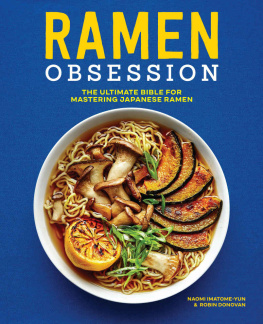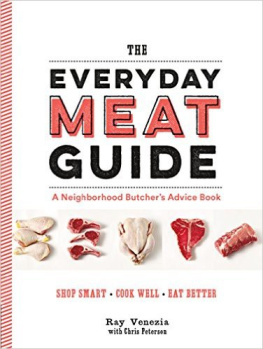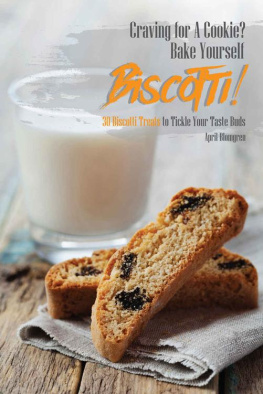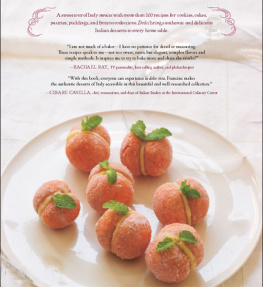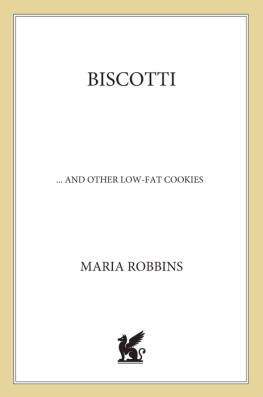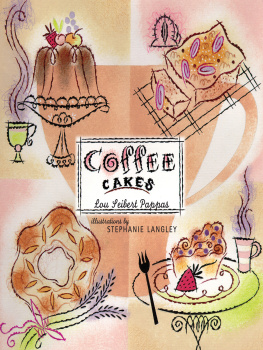


Text copyright 2015 by Domenica Marchetti.
Photographs copyright 2015 by Antonis Achilleos.
All rights reserved. No part of this book may be
reproduced in any form without written permission
from the publisher.
Library of Congress Cataloging-in-Publication Data:
Marchetti, Domenica.
Ciao Biscotti : sweet and savory recipes celebrating Italys favorite
cookie /by Domenica Marchetti ; photographs by Antonis Achilleos.
pages cm
Includes index.
ISBN 978-1-4521-2495-7 (hc)
ISBN 978-1-4521-3239-6 (ebook, mobi)
1. Biscotti. 2. Cooking, Italian. I. Title.
TX772.M276 2015
641.8654dc23
Designed by VANESSA DINA
Prop styling by SPORK AND REPRO DEPOT
Food styling by ROBYN LENZI
Typesetting by DC TYPOGRAPHY
Toblerone is a registered trademark of Kraft Foods Inc.
Nutella is a registered trademark of Ferrero.
Chronicle Books LLC
680 Second Street
San Francisco, California 94107
WWW.CHRONICLEBOOKS.COM

introduction

One of lifes pleasures is sitting down to a cup of coffee and a plate of biscotti.
These twice-baked Italian cookies are known and loved the world over, and with good reason. They are the perfect dunking cookie, satisfyingly crunchy and crumbly, not too sweet, and chock-full of nuts.
Surprisingly, I did not grow up eating biscotti in my Italian family. My mother preferred the thin, crisp embossed pizzelle that are a specialty of her native Abruzzo, and I myself was always in search of a better chocolate chip cookie. It wasnt until the 1980s or 1990s, when biscotti conquered the U.S. palate, that I started baking and truly appreciating this classic sweet.
Bite into a biscotto and you are biting into a slice of Italianor, more accurately, Romanhistory. It was during Roman times that bakers developed the technique of baking loaves of unleavened dough two times, once to cook them and once to dry them outhence the term, from the words bis (twice) and cotti (cooked). With all the moisture baked out of them, biscotti lasted indefinitely and, in fact, were said to have nourished the traveling Roman troops. Its a good bet that those early versions of biscotti were closer to hardtack than to the fancy nut-filled, chocolate-drizzled cookies that we see today, artfully arranged in curvy glass jars at pasticcerie throughout Italy and at bakeries and coffee shops around the world.
For that transformation we can thank Tuscan pastry chef Antonio Mattei, who in 1858 set up shop in the town of Prato and began selling cookies based on a centuries-old recipe. His original ingredients were flour, sugar, eggs, and pine nuts or almonds from nearby groves. There was no additional leavening; the eggs were whisked at length with sugar to incorporate air into the dough. The soft, nut-studded dough was shaped into loaves, baked, sliced, and baked again into crunchy oblongs. Matteis biscotti won prizes at food expos in Florence in 1861 and Paris in 1867. To this day, Biscottificio Antonio Mattei continues to turn out thousands upon thousands of its founders sweet, crunchy creations, packaged in signature waxed blue paper bags.
In Tuscany, the preferred way to serve these traditional biscotti is not with coffee but rather with a glass of Vin Santo, the regions famed sweet dessert wine made from dried grapes. Personally, I like biscotti with either beverage, and I wouldnt say no to a glass of cold milk as a dunking medium, either.
Over the generations, tradition has given way to interpretation and inspiration, so that now we have riffs on biscotti from all over Italy and around the globe. There are spiced biscotti; chocolate biscotti and chocolate chip biscotti; biscotti with hazelnuts, walnuts, and macadamia nuts; and biscotti studded with dried currants or apricots. Some are made tender with butter or olive oil, and some are gilded with drizzles of white or bittersweet chocolate. Its hard to fault the innovators. While I respect, even revere, traditional recipes, I cant imagine not playing around with a recipe as malleable and as open to interpretation as the one for biscotti.
And that is what Ive been doing in my kitchen for the past couple of decades since I baked my first batch. The result is this book, a collection of my favorite biscotti recipes. It includes recipes that I have gathered over the years from family and friends, from my travels to Italy, and from my own scribbled notebooks. In these pages youll find everything from classic, bite-size almond biscotti to extra-large cappuccino dunkers; and from sweet iced triple lemon biscotti to savory Gorgonzola and walnut biscotti.
The book is organized simply, beginning with Biscotti Basics, which includes a list of necessary equipment and ingredients, plus a helpful section of techniques for baking perfect biscotti. The chapters that follow are the heart of the book: Classic Flavors, Chocolate and Spice, Biscotti with Fruit, Fantasy Flavors, and The Savory Side. A final bonus chapter, Beyond Biscotti, features select recipes for a handful of my other favorite Italian cookies, including hazelnut meringues, tender jam-filled crescents, and chewy almond ricciarelli. With every recipe youll find a suggested beverage pairing. For this I must tip my hat to Italian wine and drink aficionado Scott Vance (who also happens to be my husband).
Perhaps the most appealing feature of biscotti is that they so beautifully, and sweetly, express that unique Italian blend of sophistication and rustic charm. You can dunk them in your morning cappuccino, pack them in a picnic basket, or serve them on fancy dessert plates at the end of an elegant dinner.
So pour yourself a glass of Vin Santoor a cup of coffeeand together lets celebrate yet another one of Italys delicious contributions to the culinary worldbiscotti!

BISCOTTI BASICS
A Word about the Word Biscotti
A certain amount of confusion surrounds the word biscotti, so Id like to clear that up. The word derives from the Latin biscotus, meaning twice baked. In Italy, the word biscotti has come to be a catchall term for cookies. The specific twice-baked cookies originating in Antonio Matteis bakery in Prato are more commonly known as biscotti di Prato or cantucci di Prato. You may even have come across the term cantuccini, which is simply a diminutive form of cantucci, and refers to the tapered end pieces of a sliced loaf of biscotti, which are smaller than those sliced from the middle. In this book, I have reserved the term cantucci for the most traditional recipes and went with biscotti for all the others. Finally, the word biscotti is already plural, so there is no need to add an s (biscottis). The singular form of the word is biscotto.
Making biscotti is easy once you get the hang of it. The first rule, of course, is to relax and have funyoure making biscotti! The next rule is to read this chapter, which contains an explanation of the equipment and ingredients youll need, plus essential information on techniques from roasting nuts to handling and shaping sticky biscotti dough and creating the perfect drizzle on your biscotti.
Next page

